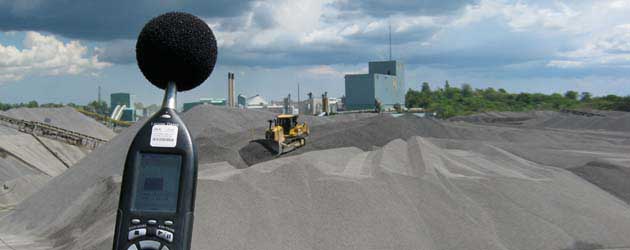Lafarge Dundas Quarry

Location: Dundas, Ontario, Canada
Owner/Operator: Lafarge Canada Inc
Lafarge is the largest diversified supplier of construction materials in the U.S. and Canada, producing a wide array of products used in residential, commercial and public works construction projects across North America. The Dundas Quarry is the flagship Lafarge aggregates operation in Ontario, and is one of the largest quarries in Canada. Lafarge retained HGC to undertake an Acoustic Assessment of the Dundas Quarry in order to fulfill a condition of an Environmental Compliance Approval issued for the facility by the Ontario Ministry of the Environment (“MOE”).
Facility Description:
The Lafarge Dundas Quarry can operate up to a maximum of 24 hours per day, (which was assumed for the purposes of the assessment). It is divided into three separate parts, a Main Processing area, a South Quarry and a North Quarry. Aggregate materials extracted from the North Quarry are transported by rock trucks to the primary crusher, which is located below grade near the southeast side of the North Quarry. Material exiting the primary crusher is transferred by conveyer from below to above grade and eastward to a primary stockpile, whence it is drawn from below via a feeder then onto a cable belt which transports the materials above grade to the Main Processing Area approximately 3 kilometres to the south.
The main processing area consists of four secondary crushers housed within two separate buildings, six vibrating screens housed within a screening building, as well as a wash plant, through which various materials are processed before being stockpiled for shipment offsite. An emergency generator is located at the Processing Area scale house, which is occasionally operated for maintenance purposes.
The South Quarry is primarily used to stockpile materials for shipment offsite
Acoustic Assessment:
A 3D acoustical model of the site and surrounding area was developed, based on detailed measurements of more than 120 individual sources of noise using superior sound intensity instrumentation and measurement techniques.
Measurements of overall facility sound levels were also conducted in the surrounding community, the results of which were used to verify the accuracy of the predictive model, and were compared to the applicable limits, established in accordance with MOE guidelines. Detailed noise control recommendations and a Noise Abatement Action Plan were developed by HGC and incorporated into an Acoustic Assessment Report for the site.
Primary sound sources at the facility that were evaluated:
- Main conveyor
- Secondary surge pile
- Secondary crushers
- Screen plant & wash plant
- Mobile equipment (front end loaders, dozers) & conveyors
- Emergency Generator
Acoustical consulting services delivered:
- Comprehensive onsite and offsite acoustical measurements
- Predictive acoustical modeling
- Noise control recommendations
- Acoustic Assessment Report & Noise Abatement Action Plan
